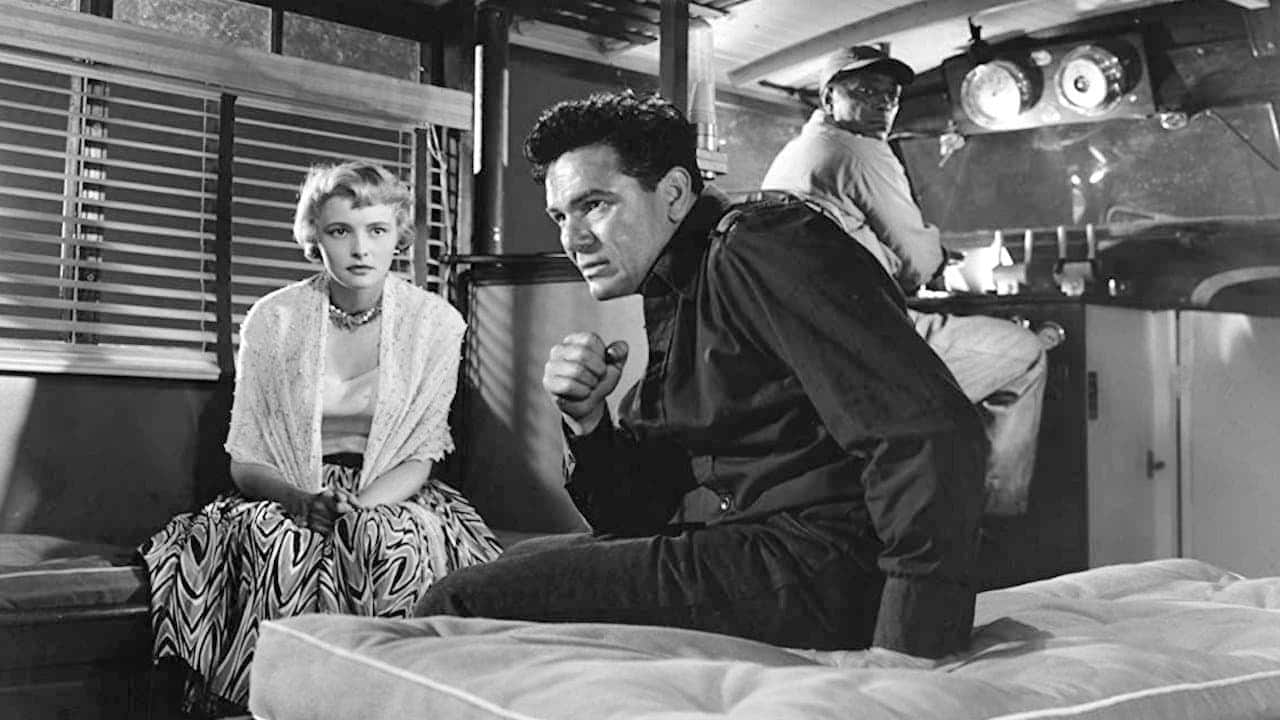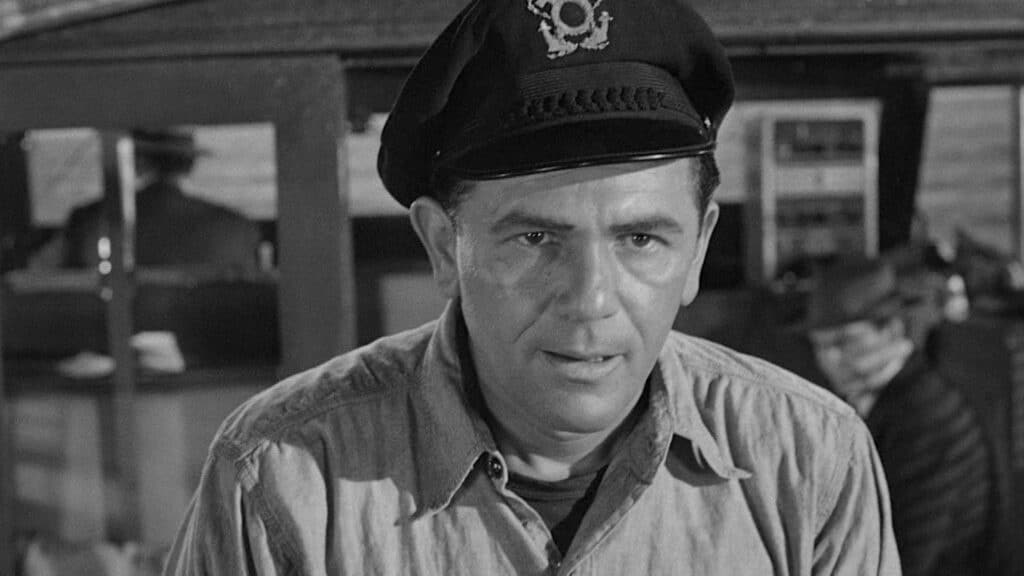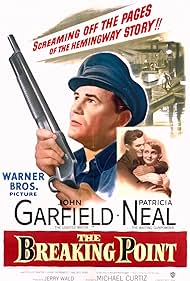Released in 1950 two years before the death of its star, John Garfield, aged only 39, The Breaking Point played to all Garfield’s strengths – he’s the tough guy military veteran attempting to maintain masculine dignity in a world that doesn’t want him any more. It was his favourite role.
Harry Morgan (Garfield) is scraping along in the business he set up after he returned from the Second World War, chartering boats out for fishing and whatever comes along. Times are hard and he owes everyone money, and so, in hock to his eyeballs, a disappointment to his loving wife (Phyllis Thaxter), bossed by an offstage father-in-law dangling a job with his successful company, struggling with his two daughters, Harry accepts a job taking rich guy Hannagan (Ralph Dumke) and his flighty young mistress Leona (Patricia Neal) to Mexico on what is basically a sex holiday for the older guy and a chance to catch some exotica (and money) for her.
As well as being the first job in a string of dodgy trips with increasingly dodgy people, it introduces Harry to Leona, a woman whose tastes run more to the Harrys of the world than the Hannagans, as she wastes no time telling him.
Ernest Hemingway’s To Have and Have Not is the source material. It had already been adapted into the 1944 Howard Hawks movie of the same name starring Humphrey Bogart and Lauren Bacall. The Breaking Point is truer to the original. As well as a concern with masculinity (Hemingway’s male heroes are often men in crisis), this adaptation retains Hemingway’s political/economic angle – Harry is one of the Have Nots of the title, and how it rankles.
Film gris, some people call it, finding a socialist aspect to the story, the defining ingredient for gris. But a single man doing his best to fight his way out of a bad situation isn’t socialism, no matter how you frame it. Nor is pointing out that times can sometimes be tough. Nice try though.
It’s noirish enough though. Garfield tries not to play it like Bogart but he can’t help himself. It doesn’t hurt his performance at all, and you can imagine Hemingway nodding in agreement at his casting – Garfield is handsome, manly, tense like a coiled spring and has plenty of tough-guy bravado.
Every scene between Garfield and Neal is dynamite – he wanting to jump her and yet not doing so because he loves his wife. She becoming increasingly moist in her appeals to his animal nature. Neal, only a year into her movie career, is dangerously wanton. At home, poor wifey Lucy knows she’s out-classed, out-gunned, out-everythinged and at one point dyes her hair blond because that’s how Leona is wearing it. Even if Phyllis Thaxter never saw the scenes between Garfield and Neal, she must have seen Bogart and Bacall in To Have and Have Not and so knew where her character stood. She gamely keeps her end up.
Every scene between Garfield and Neal is dynamite – he wanting to jump her and yet not doing so because he loves his wife. She becoming increasingly moist in her appeals to his animal nature. Neal, only a year into her movie career, is dangerously wanton. At home, poor wifey Lucy knows she’s out-classed, out-gunned, out-everythinged and at one point dyes her hair blond because that’s how Leona is wearing it. Even if Phyllis Thaxter never saw the scenes between Garfield and Neal, she must have seen Bogart and Bacall in To Have and Have Not and so knew where her character stood. She gamely keeps her end up.
Direction is by Michael Curtiz and it’s remarkable as a piece of technically accomplished film-making. With a fluid camera he turns a narrow fishing boat into a stage broad enough for big action and high emotion.
Notice also how different Curtiz is here than he was in, say, The Adventures of Robin Hood or Casablanca, 12 and eight years before. Though it’s in black and white The Breaking Point is a modern movie, shot on location, with a look that’s bright and clear, a world away from Curtiz’s studio-bound films of yore.
All that said, when Harry, Hannagan and Leona first touch down in Mexico, things get suddenly very Casablanca-like – bustling crowds, sweaty spaces, exotic music, left-field characters, borderline criminality. It’s like Rick’s Bar all over again, except the bar in Mexico is called Gallo and there’s cock-fighting out the back (metaphor alert).
“You’re a man. You’re more of a man than anybody I ever met,” says Harry’s embattled wife to him, not once but twice. Harry, knowing that masculine pride is built on deeds not wifely praise, tries to live up to his billing, doubling down every time one of his schemes fails until eventually things come to a climax out out on the high seas where Harry is supposed to be spiriting some desperadoes who have just robbed a race track to safety. Here, as things come to a head, Curtiz coolly demonstrates how to shoot an action sequence in a tight space.
And they all lived happily ever after? Yes, almost. Virtue is rewarded, foolishness is punished and Harry ends up in some ways less of a man than he started, in other ways more. He has and has not, in other words. Add poetic symmetry to the list of this film’s achievements.
The Breaking Point – Watch it/buy it at Amazon
I am an Amazon affiliate
© Steve Morrissey 2021


